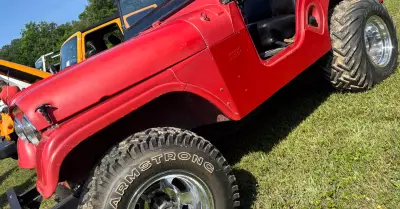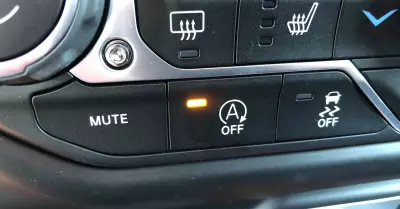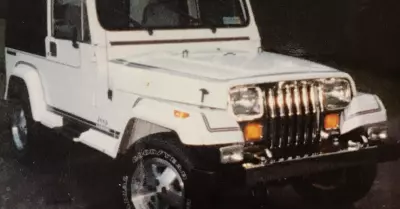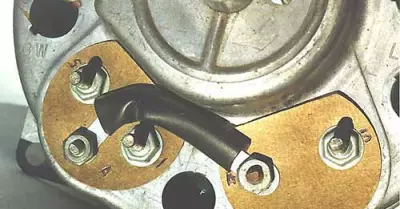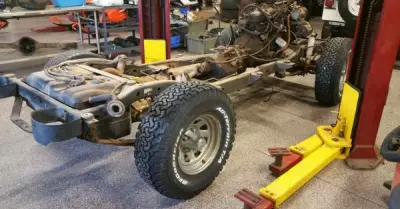Anyone who has been off-roading more than a few times understands the reasons to “air-down”. If you don’t know why then read on.
Airing Down allows your vehicle’s tires to conform and actually grip rough off road surfaces while increasing the tire’s contact patch. The softer tires will also absorb bumps to make your off road ride a bit more comfortable.
What’s a “contact patch”?
The tire contact patch is the actual surface of the tire that meets the ground. This is effectively the surface that provides the traction to move the vehicle. Below is a representation of the differences of the contact patch relative to tire pressure. Vehicle weight and tire stiffness will affect the patch.
 30 psi |
 15 psi |
 7 psi |
A common sound before a trail run is the hissing of tires being deflated. There are several quick deflator and auto deflator products out there to help with the burden of airing down.
See QuickAir Deflator from Sun Performance Review
See Oasis Off Road Mfg. Automatic Tire Deflators Review
It is true that you may loose a bit of ground clearance when aired down but the benefits far outweigh the sacrifice. Perhaps a good excuse for larger tires?
How low should you go?
The following table can be used as an initial basis for airing down your tires. Rim width, tire construction, and weight distribution may necessitate the need for adjustments. The pressures (psi) in this table are applicable for most forms of four-wheeling (up to 20 mph).
| Tire Size | Gross Vehicle Weight | ||||||
| 2000 lbs. | 3000 lbs. | 4000 lbs. | 5000 lbs. | 6000 lbs. | 7000 lbs. | 8000 lbs. | |
| 215/75R15 | 11 | 13 | 15 | N/R | N/R | N/R | N/R |
| 235/75R15 | 10 | 12 | 14 | 16 | N/R | N/R | N/R |
| 29×8.5R15 | 10.5 | 12.5 | 14.5 | 15.5 | N/R | N/R | N/R |
| 30×9.5xR15 | 9 | 10 | 12 | 14 | 16 | N/R | N/R |
| 31×10.5R15 | 8 | 9 | 10 | 12 | 14 | 16 | N/R |
| 32×11.5R15 | 7.5 | 8.5 | 9.5 | 11 | 13 | 15 | 18 |
| 33×9.5R15 | 9 | 10 | 12 | 14 | 16 | N/R | N/R |
| 33×12.5R15 | 7 | 8 | 9 | 10 | 12 | 14 | 16 |
| 35×12.5R15 | 6 | 7 | 8 | 9 | 10 | 12 | 14 |
| 36×14.5R15 | 5 | 6 | 7 | 8 | 9 | 10 | 12 |
| 38×15.5R15 | 4 | 5 | 6 | 7 | 8 | 9 | 10 |
| 225/75R16 | 11 | 13 | 15 | N/R | N/R | N/R | N/R |
| 245/75R16 | 10 | 12 | 14 | 16 | N/R | N/R | N/R |
| 265/75R16 | 9 | 10 | 12 | 14 | 16 | N/R | N/R |
| 285/75R16 | 8 | 9 | 10 | 12 | 14 | 16 | N/R |
| 295/75R16 | 7 | 8 | 9 | 10 | 12 | 14 | 16 |
N/R = Not Recommended
After a day on the trail with your tires deflated it comes time to go home and re-inflate. There are several ways to accomplish this. See Air Up Basics.



